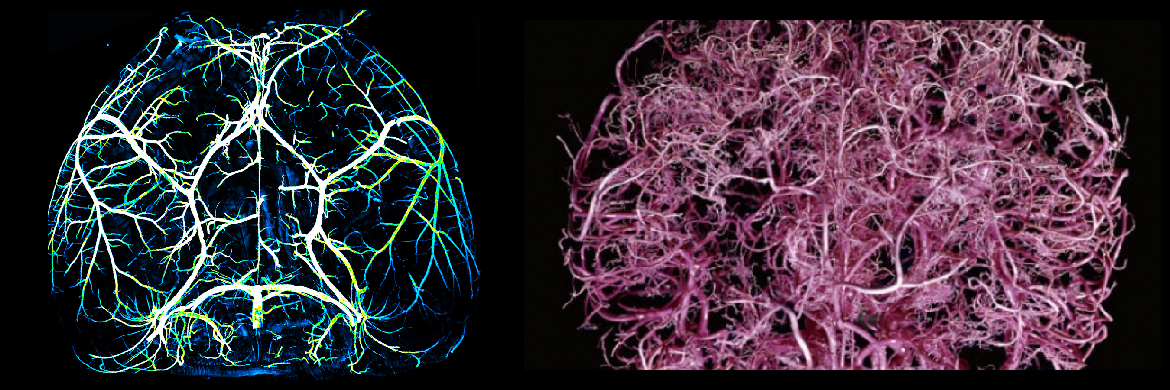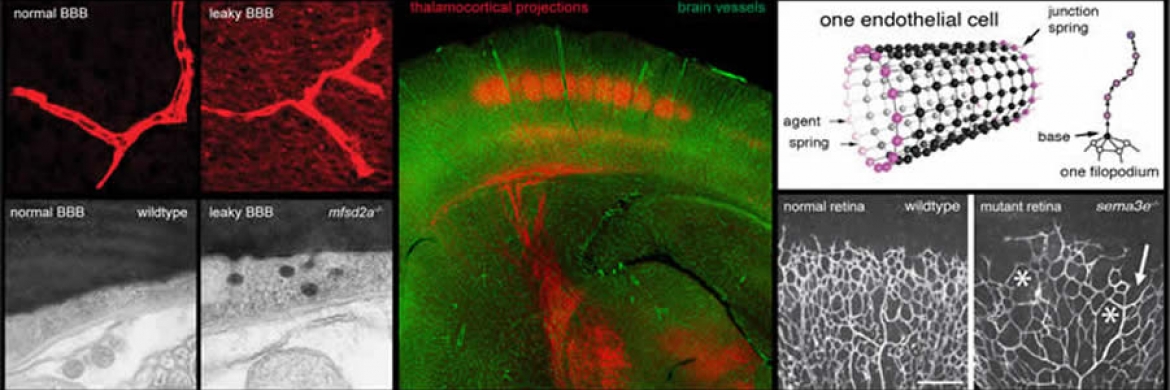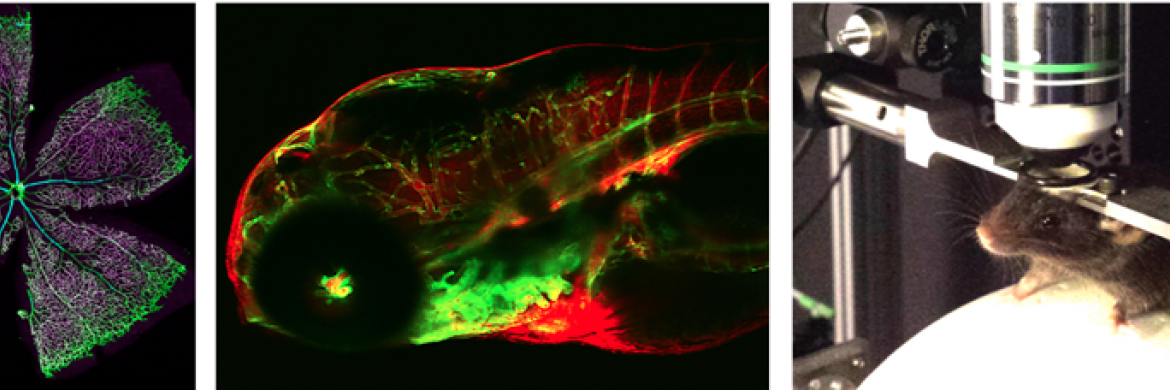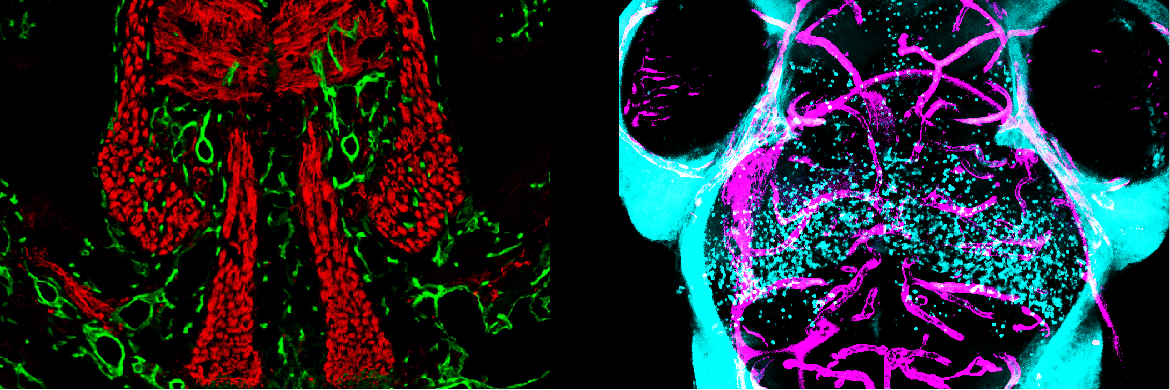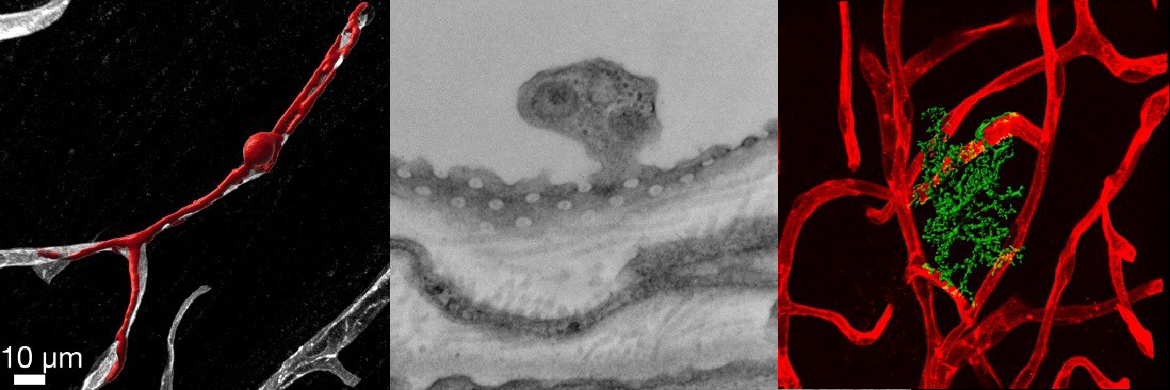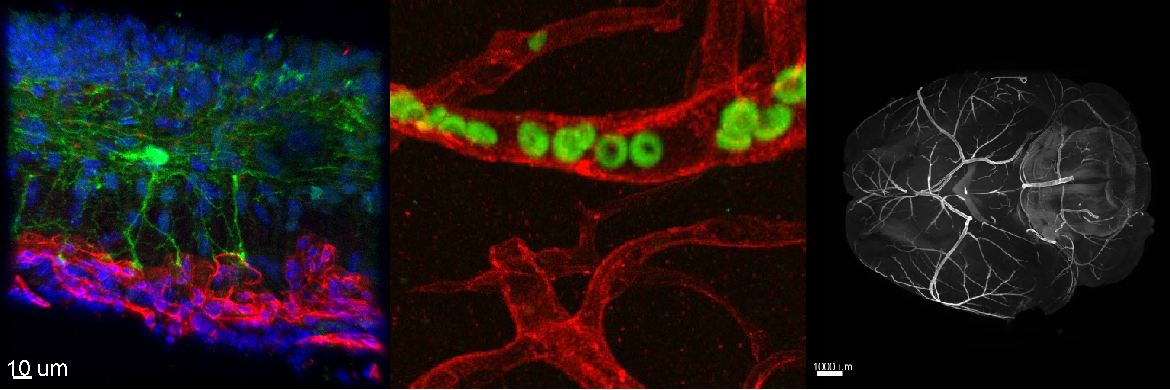Our Mission
Our mission is to understand the cellular and physiological mechanisms underlying the unique neurovascular interactions including the blood-brain barrier and neurovascular coupling, and to harness our discoveries for therapeutics.
Our Interests
My laboratory studies the interface of the nervous and vascular systems. The brain is one of the most vascularized organs of the body. In our brain, each neuron is at most 15 microns away from a capillary, and the elaborate vascular network is more than 400 miles long with 12 square meters of surface area in contact with neural cells. The brain vasculature has many distinct features that cater to the brain’s unique functions. For example, neurons in the brain are extremely sensitive to their extracellular chemical environment, so brain blood vessels form a blood-brain barrier (BBB) to provide a safe and homeostatic environment for the brain. Despite representing only 2% of the body weight, our brain consumes 20% of body’s energy at rest and has very limited ability to store energy. So, to meet moment-to-moment changes in regional brain energy demand, neural activity rapidly increases local blood flow, a process called neurovascular coupling. In addition, the brain vasculature is the first line of contact between the brain and the periphery as systemic circulation contains factors released from all organs. So, any substance that affects the brain must first talk to brain endothelial cells. How the brain vasculature carries out these diverse and critical functions by interacting with the systemic and brain factors to control brain’s own environment and energy is an important and largely uncharted research area.
Currently, most of the drugs cannot pass the BBB, and neurodegeneration and age-related cognitive deficits are associated with impaired BBB and neurovascular coupling. Understanding the basic mechanisms underlying these complex, important physiological functions will provide a new view of how the brain and vascular systems communicate chemically and via the activity of neurons, which could have a big impact on therapeutics, enabling transient access of drugs to the CNS, and could completely change how neurological diseases are treated.
Experimental Approaches
Our approaches include mouse genetics, transcriptional profiling, brain endothelial cell-specific viral infection, traditional TEM, serial section EM, and real-time live imaging in awake mice under physiological stimulations (somatosensory and visual) under 2-photon cranial window (somatosensory and visual cortex). Our ultimate goal is to understand and manipulate the mechanisms that govern the exchange of molecules between neurons and blood, to study in vivo physiology from molecular level, cellular and subcellular levels, to a system level.


